As Indigenous Peoples, art is woven into the fabric of our communities and cultures. Much of our traditional lifestyles are passed down through creative expression or preserved through storytelling. The bearers of traditional knowledge today share the teachings of their people and ancestors through a variety of mediums, from visual drawings or painting, beadwork, weaving and radio broadcasts.
Two Indigenous artists and culture-bearers doing this work today are Amadeo Cool May and Ilegvak Williams. Coming from two ends of Turtle Island, also known as North America, Ilegvak, Yu’pik from Alaska and Amadeo, Maya from southern Mexico, each have found ways to preserve and share their respective cultural knowledge alongside their communities through various mediums working to dismantle colonial structures for their people.
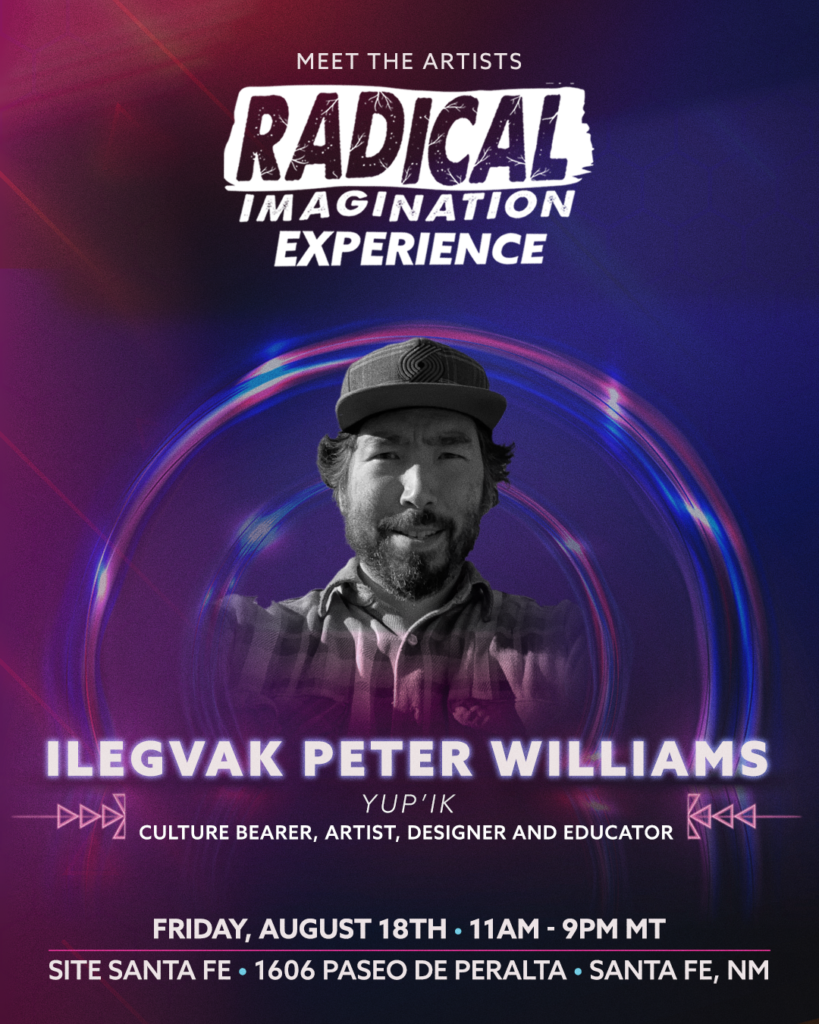
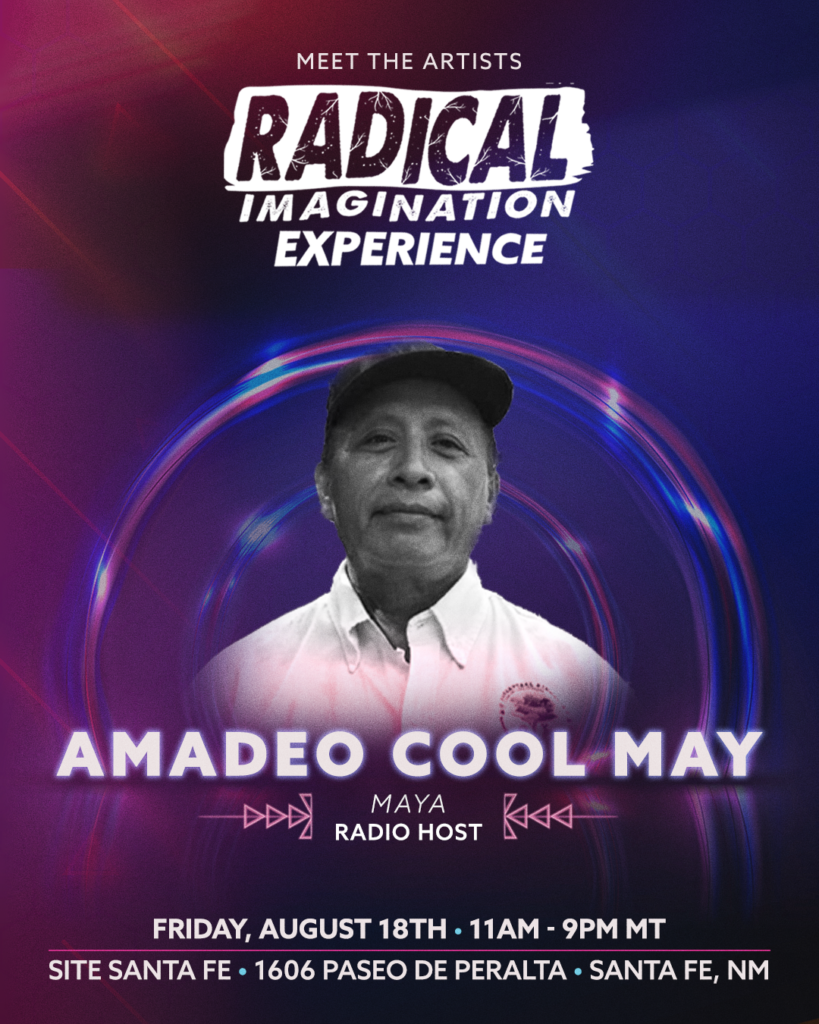
As part of NDN Collective’s 2021 Radical Imagination Artist Cohort, Amedeo and Ilegvak will share their work at the Radical Imagination Experience hosted by NDN Collective on Friday, August 18 in Santa Fe, NM. In preparation for the event, we sat with them and discussed their work, their motivations, as well as how each of them connects to themselves and their culture through creativity.
Here is what they shared with us:
WHAT IS THE MOST MEANINGFUL PIECE YOU’VE CREATED OR WORKED ON SO FAR AND WHY?
Ilegvak: Yeah, I can’t answer that. I don’t think there is one that is the most meaningful. I think part of why I’m having a hard time with the question is because I don’t view myself and my work as separate. I don’t view my culture, my life, my lifestyle, and what I create, as separate things. It’s all a part of my life as well as part of an intergenerational existence and interspecies existence that stems since the beginning of time. So, within that context I can’t choose one piece that I would say is my favorite.
Even myself, I’m just a very small drop in this massive flow of water of creativity. I really enjoy being a part of it and that’s meaningful to me. I think art is important, just as all aspects of our lives are important, but it’s also just art. So maybe that goes to thinking about things and the scale of existence beyond my current understanding. It’s hard for me to say what a favorite piece is within that.
With my work, we’re talking about my practice with fish skin and bringing that down to Santa Fe to demonstrate how that is also very important to me as this broader community component. You know, our non-human relatives who are giving their lives so that we can live and then that benefit of the fish and the nourishment that is going into my community, and sharing that for elders. I’d love to be able to harvest for elders and then use that skin and artwork to kind of talk about this cultural way of being and these life forms. It’s also addressing things about climate change. The relationship and process in general is very important to my work.
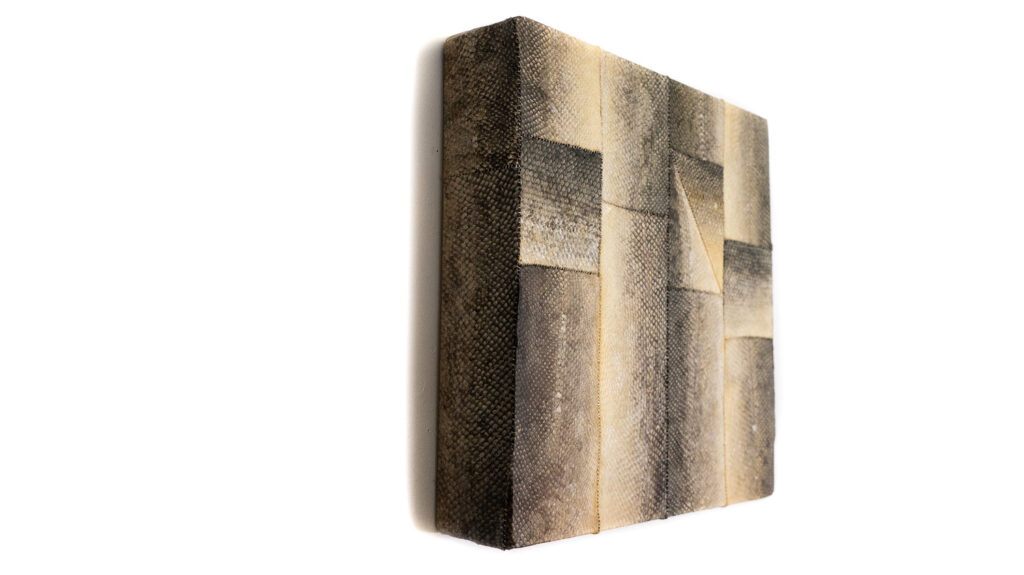
Amadeo: I’ve done a series of radio capsules called, “The Return of the Black Jaguar.” The Black Jaguar is a deity that we consider here in our culture to be the man of the jungle, of the mountain, and we call him Eck Ballan. “EK” means black. “Ballan” is Jaguar. I lead these series of radio capsules that are in the Mayan language and Spanish language, and we talk about the importance of giving value once again to the ancestral wisdom that comes from our community. Things like caring for the environment, not just the jungle, but the water.
Here there exists a strong tradition and faith in the water or “God water.” It’s called “yuchuck.” So we respect this greatly. Even when we’re little kids, when we’re playing around like a puddle we cannot throw rocks into the well or the pool of water. We have to respect the water. We can’t leave anything on the floor, on the ground, even like a grain of corn. We would have to pick it up because we have to take care of the ground and the soil. That’s been lost with modernity.
They always say “the Mayans,” right? As if we were far away people that don’t exist anymore. But no, we exist. The Mayans from the peninsular region. We are here.
Amadeo Cool May (Maya)
So, this is something that we really encourage and something that I’d like to talk about in Santa Fe. These are ideas that have to do with how we educate our people and something that was useful for our community life. To have a healthy social life, not just for the family, but for the community as well. It’s something that’s very beneficial and something that has to be strengthened.
IN WHAT WAYS CAN WE USE MEDIA AS A TOOL FOR DISRUPTING FALSE NARRATIVES AND RESTORING CULTURAL KNOWLEDGE IN OUR OWN COMMUNITIES?
Ilegvak: I think in regards to the general cultural fabric of who we are as people and then also who we are as Indigenous people, as Alaska Natives, as Yup’ik, that contains a lot of information as well as identity and cultural tradition in the arts in regards to media. When I read that question I also thought about the context of what media we’re talking about. If we’re talking about a mainstream settler colonial media, I think that in and of itself is often a false narrative. [It’s] a false narrative in the context because it comes from a very specific group of people with a very restrictive value system of design of who is going to benefit. It comes from a capitalistic, extractive, racist, patriarchal mindset.
I think although that narrative exists and we exist under that form of oppression, it’s also a very false narrative for Indigenous people. That’s the importance of creating our work and being represented in the media. So we can show other forms and ways of being as well as dismantling such colonial structures that I mentioned. As well as continuing to perpetuate Indigenous narratives that have been here since time immemorial.

I find art as an expression of the human experience and it’s probably more than that as well. In regards to a cultural kind of specific art, I think a lot of what I’m drawn to is trying to find myself within it as someone who is half settler colonial and raised outside of my culture by the white side of my family. Trying to connect in ways with my Yu’pik side and my Indigenous side. So art and culture has been a way for me to do that, and creativity is a way for me to do that. It’s a way for me to not only express myself, but it’s also a way for me to learn. Cultural work, creativity, Indigenous narratives, I also find them as forms of resistance to colonialism.
Amadeo: They always say “the Mayans,” right? As if we were far away people that don’t exist anymore. But no, we exist. The Mayans from the peninsular region. We are here.
So on my part, I think I just cannot miss this great opportunity to be able to say, here we are, we exist, the Mayan people, we are here. There have been hundreds and thousands of years that we have always been here. We’re still here. We’re present. Many of us live in precarious conditions due to the social dynamic that has been carried out for so many years but still, there is something that we can share with coming generations. We’re doing this, paying homage to our ancestors because they were able to transmit their knowledge and how to live in these severe adverse situations. We can still tell you about us and about what we have done.
We know that every young person, every little kid, every child that is growing up, they are receiving the energy that they get through their blood, through their genes. It’s a millinery-like charge that’s really rooted and connected to our worldview that’s existed for a thousand years.
Amadeo Cool May (Maya)
After I left school, I had the opportunity to be a part of a Indigenous communication group here in my region. It was a radio channel and I was an Indigenous broadcaster and we would take classes from the Autonomous University of Mexico City. I did radio broadcasting and I really liked it a lot. [Now], this is something that I’ve done my entire life, 36 years being a radio broadcaster. We talk to our people. We talk to people about our culture, our customs, our traditions, and we accompany these different communities with the radio, with these different ways of communicating. So it’s been an incredible experience. And what’s great is that it doesn’t take me away from my culture, but rather it connects me even more to my roots. We can share these with the means that we have now, the media that we have now, and we can give them greater value in order to give proposals for the future.
HOW DID THE RADICAL IMAGINATION FELLOWSHIP SUPPORT YOU DURING THE TWO YEAR GRANT?
Ilegvak: As I try to get more rooted into spending more time with other Indigenous people, mostly appreciating just how many amazing Indigenous thinkers and culture bearers and artists there are in the world. I think that’s something beautiful to have revealed within this time of COVID and movements that have been percolating in the country and largely since you know, protecting the water and land. That’s something that I’m starting to focus more on.
There’s just so many other really cool Indigenous people that I’m just like, “Hey, what can I do to help and support,” as well as integrate into my practice? I think part of that too is coming out of a need. There’s really a need for increased visibility of Indigenous thinkers, beings and creators. So that’s something that I’ve really appreciated, with my time.
I’m really trying to take care of myself and continue to do what I think Creator wants me to do, what my ancestors want me to do and also really enjoy life.
Ilegvak (Yu’pik)
Also my writing, I’m writing more. I’m working on this project with an elder, Wilson Justin. I wrote about him in First Alaskans on climate change. We met years ago and he’s wanting to put together a book that he and I are going to edit for the younger generations in dealing with climate change. [Asking things] like, “All right, how do you community plan with these things?” Also, “How do you community plan while decolonizing and Indigenizing?” Thinking about community planning and infrastructure beyond roads and asphalt, which is a very colonial way of community planning.
So over the course of the two years or in particular this last year when I go to Anchorage, being able to take [elders] out for lunch and dinner and interview [them] and spend time transcribing those. I don’t know what’s going to come of this project with him and it’s kind of slower than maybe we both want, but things like that. I’m very appreciative for getting funding from Radical Imagination that allows this flexibility and freedom to do work that wasn’t necessarily in my proposal.
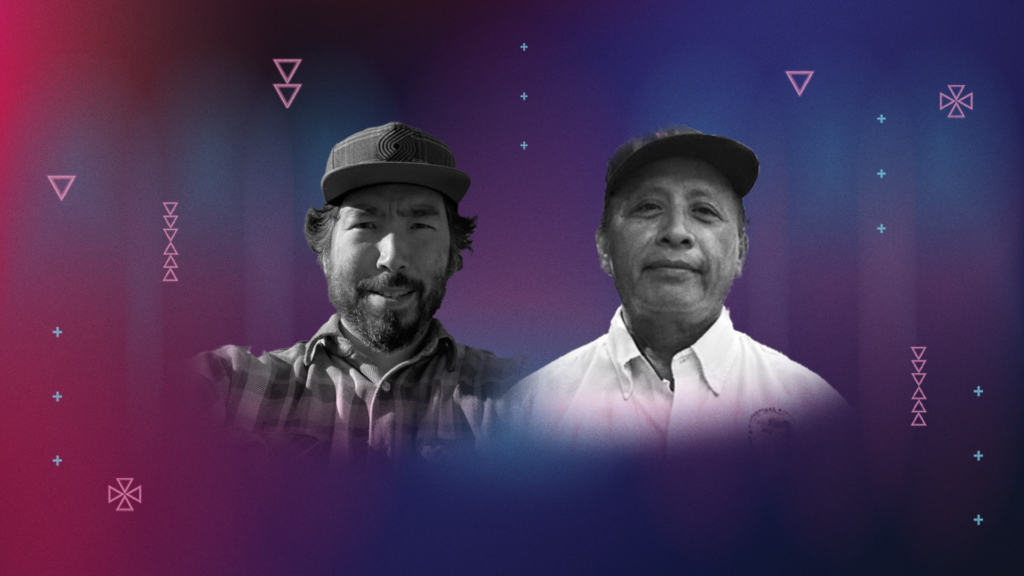
Amadeo: [When] I went to school and as part of my youth I had the opportunity to learn about the milpa.* This is what my project is about, the Milpa. Milpa is an 11,000 year old way of farming. It’s something that’s sustainable. We’ve been doing this for hundreds of years and this is something that we can understand in our region as something sustainable.
We understand that everything that we do as humans, as people, has a certain measure, a way of doing things. And if we go beyond that measure, then it can come back to haunt us or to be something negative to affect us. I would like to share this topic with other people from around the world.
I really don’t have words to say how infinitely grateful I feel to this foundation, to this group of humans at NDN Collective that has given me this support. It’s like an acknowledgment of the effort we are [making] in spite of the fact that we’re not communications specialists. But I have all the intention in the world to continue supporting my community, my people, my ethnic group, and to really help my brothers around the world in any way that I possibly can.
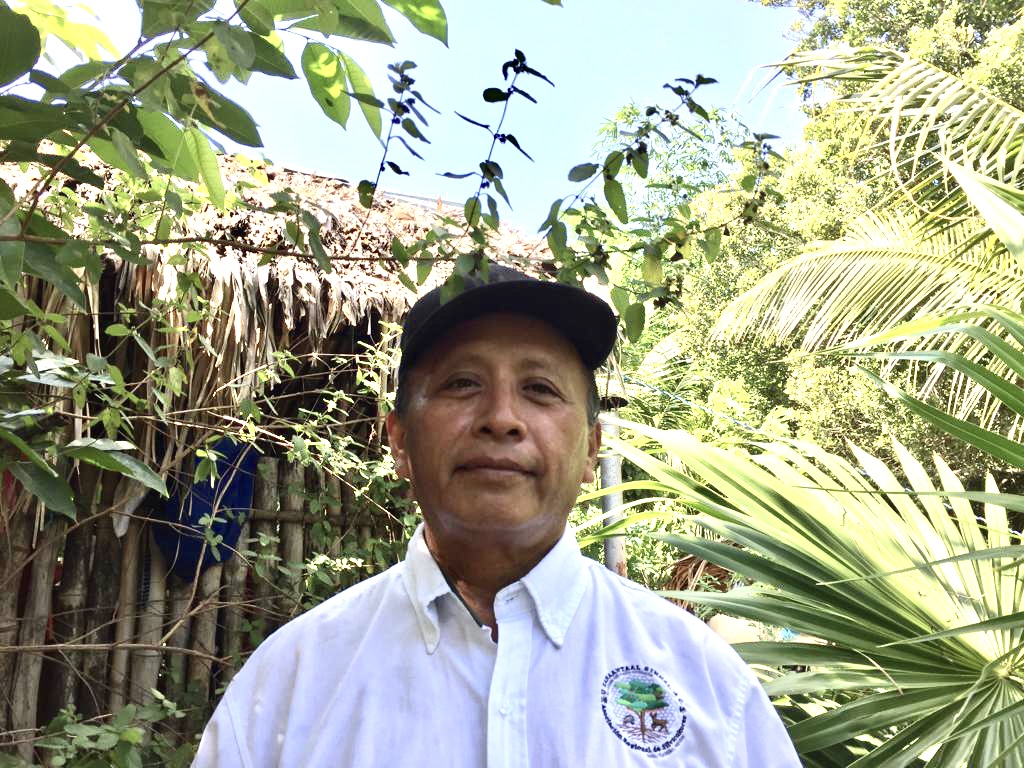
This fellowship has really changed me in some ways because it has helped me to be aware that what I do as a communicator, it’s important and can make a difference in the lives of others.
Amadeo Cool May (Maya)
It really encourages me, that what I’ve been doing for 30 years is something that’s valued. It’s something that has importance because it does not just benefit me to be part of these radio communications. We know that we can really affect or influence the thoughts of others and we can analyze what’s important, what’s best for us, or not best for us, and make our own decisions by doing this communication. This fellowship has really changed me in some ways because it has helped me to be aware that what I do as a communicator, it’s important and can make a difference in the lives of others. [The Radical Imagination Fellowship] really has helped to encourage me to keep going, to keep doing the kind of work that I’m doing here, promoting our culture.
HOW ARE YOU PREPARING FOR THE EVENT (PHYSICALLY, SPIRITUALLY, EMOTIONALLY, ETC.)?
Ilegvak: I’m not going to create any new work. But I’m going to bring some materials, so I’m going to bring some bark that I use for the bark tanning. I’ll bring some fish skin that I’ve tanned, so I’ll have that on display. I’m going to work on a little video that shows me fishing and harvesting the material and bark. So that [part] of the work and the process is also represented visually in the video as well as literally in the pieces and then my talk. So those are the more specific ways I’m preparing.
I’m really trying to prepare myself with openness and receiving. Which I think in the contexts of being Indigenous, in this country, and Indigenous anywhere; receiving can be very difficult. We have been tooken advantage of and abused. So being open can be hard when one has been traumatized and is working through trauma. That’s something that is also very beautiful about receiving funding such as the NDN Collective Radical Imagination Grant and other funding I’ve received to support my work.
There’s really a need for increased visibility of Indigenous thinkers, beings and creators.
Ilegvak (Yu’pik)
Sometimes it’s tough to receive that because the messages that we have received even before we came into this world, the messages that were put out there [said] we are not worthy and that we’re not fully human. So overcoming that and being open to receiving things like this and receiving the support and receiving the attention is like saying, “Yes, you, these Indigenous artists and changemakers and visionaries are important.” That they have a place, they should have a place to express these things. So going into that, I think with openness is something I’m really excited about and connecting with the cohort in person. There’s quite a few that I’ve been wanting to meet in person.
I’m really trying to take care of myself and continue to do what I think Creator wants me to do, what my ancestors want me to do and also really enjoy life. This gift of life that was given to me, which for a lot of my existence, I was very angry about living because of the amount of pain and hardships I went through. So all of that, just that kind of self-care and that openness and trying to bring that in.

I appreciate your question [asked], “How are you preparing for the event physically, spiritually, emotionally?” So that’s what I thought about. I’m also just in a place where I think internally I’m trying to be more open and present. I’m excited to bring that to Santa Fe as we convene.
Amadeo: I’m really thinking about things that happened to me when I was a child in order to rescue them, record them, write them, to really share our story. That’s what I’ve been thinking about a lot. How to recap, summarize everything that I’ve gone through. I’ve been thinking about all these things for several weeks and I want to–when I get there–share in a short video. Share part of our culture, how our existence is today, how we live.
I want to share these ten radio capsules with you. I’m going to take them with me. It’s the Return of the Black Jaguar and the artisanal work that some of the artisans, my friends, that I work with and that listen to our program [made]. In gratitude they do their work. They get inspired by the radio capsules. And I want to be able to share with you something of our culture. I’ve been getting prepared in that way.
We’re doing this, paying homage to our ancestors because they were able to transmit their knowledge and how to live in these severe adverse situations. We can still tell you about us and about what we have done.
Amadeo Cool May (Maya)
We know that every young person, every little kid, every child that is growing up, they are receiving the energy that they get through their blood, through their genes. It’s a millinery-like charge that’s really rooted and connected to our worldview that’s existed for a thousand years. I feel like I am ready to go and do this presentation while getting to know you and meet everyone else there and get to know about the work that they’re doing. The work that they’re doing that’s done in support of their people. This will be a great moment to get together and to talk and listen to each other and to say, here we are, we’re still here.
With this I’ll be able to send a big greeting to my Mayan brothers and sisters that live in California and in other states as well as in Canada. I’m sending a warm greeting to all of them and for all of you as well.
It was incredible to sit down and speak with both of these artists and hear from them about why they create and what they hope for the futures of their communities. We look forward to connecting with them and other Radical Imagination Artists in the coming days.
Amadeo and Ilegvak will be part of panel discussions during the Radical Imagination Experience event, alongside fellow 2021 Radical Imagination cohort members on August 18th. Amadeo’s will occur at 12:15pm MT and Ilegvak’s at 3:15pm MT. Until then, we wish both Ilegvak and Amadeo continued inspiration and connection as they utilize both of their mediums to strengthen culture and community.
We hope you can join us! NDN Collective will also be live streaming the event on our Facebook and YouTube pages
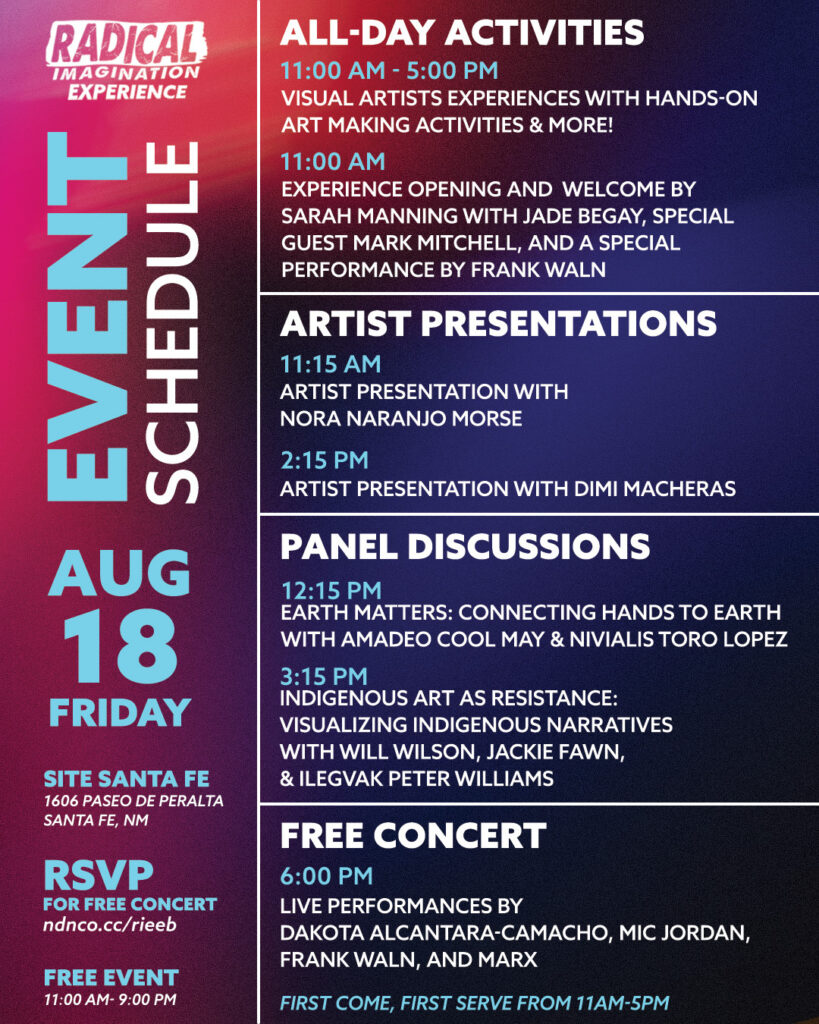
Related Articles:
Blog | Community, Salmon, & Water: How Indigenous Illustrator Jackie Fawn Creates Art for the Movement
Press Release | NDN Collective to Hold Free Event Focused on Resistance & Art
Blog | Announcing NDN Collective’s 2022 Radical Imagination Artist & Storyteller Cohort
Blog | NDN Collective Kicks Off Radical Imagination Virtual Festival, A Multi-Day Event
NDN Live | Radical Imagination Virtual Festival
Blog | Announcing NDN Collective’s 2021 Radical Imagination Artist & Storyteller Cohort
Blog | NDN Collective Selects Ten Indigenous Radical Imagination Artists From Across Turtle Island
